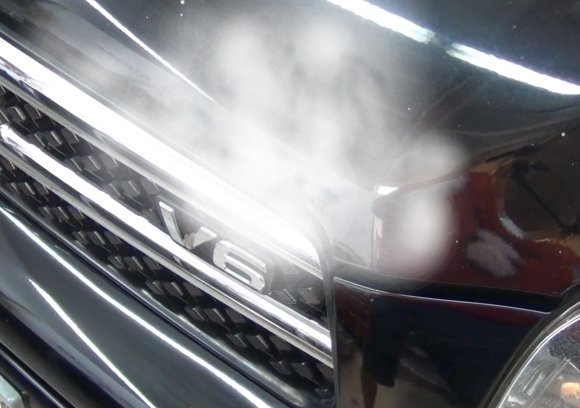Simple problem; simple fix.
You had no heat without the thermostat because the coolant didn't stay in the engine long enough to get warm. This is hard on the engine because internal parts are designed to fit properly when warm and expanded. Emissions will be high, and blowby will condense in the engine oil forming sludge.
Now that you have the thermostat installed, there is a giant air pocket behind it that will not bleed out when you fill the coolant. The thermostat only opens up when hot liquid hits it, not hot air. The coolant is too low in the block to hit the thermostat so it never opens and the air can't get out. You actually got lucky. While driving, some hot coolant splashed up high enough to hit the thermostat, it opened, some cold coolant came in from the radiator, and the thermostat closed again. If the overflow bucket had been full, the engine would have drawn coolant in when it cooled down, and eventually the problem would have gone away.
To burp the air pocket out, there are two, three, or four threaded holes on the thermostat housing. There may be a plug on top and one on the side that require a 10 mm allen wrench to remove. If they are really tight or the hex hole rounds out, there will also be one or two temperature sensors. You can unscrew either of them to burp the air.
Fill the radiator while a plug or sensor is removed until you see the coolant reach the hole. An alternate method is to remove the radiator hose from the thermostat housing and use a long thin screwdriver or punch to push on the spring-loaded thermostat disc to release the trapped air.
You will need to perform one of these procedures every time you flush the coolant or drain the system for a repair. Some thermostats have a very small bleed hole in the center disc to allow a small amount of coolant to flow when it's still cold. This is especially important when the thermostat is a long way from where most of the internal heat is generated. The temperature sensor for the gauge reads the hot coolant, but the thermostat is surrounded by cool liquid so it doesn't open up. Eventually the hot liquid migrates over to the thermostat and it opens, but not before the gauge indicates an overheating condition. When the thermostat opens, cold liquid rushes in from the radiator, the temperature gauge goes to cold, the thermostat closes, and the process starts all over again. Depending on the engine, it can take a few cycles to become steady, or it may never stop cycling. Some thermostats have that small bleed hole to keep the hot coolant flowing to prevent the gauge fluctuations.
Caradiodoc
Saturday, March 21st, 2009 AT 1:48 AM


